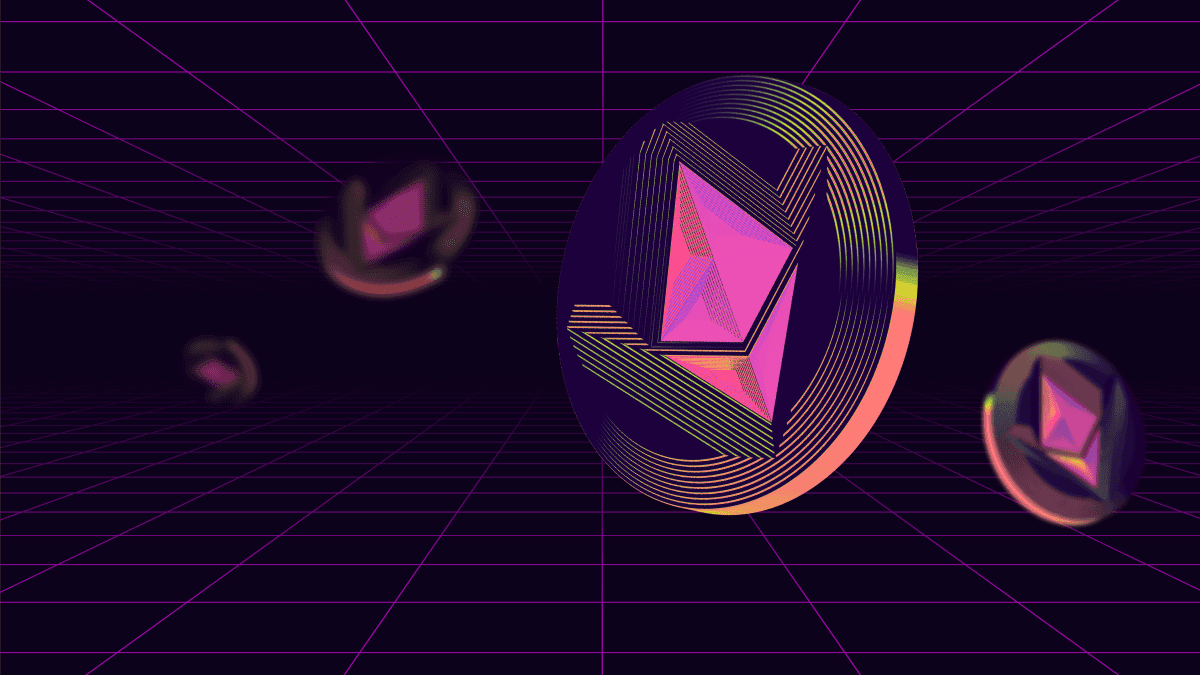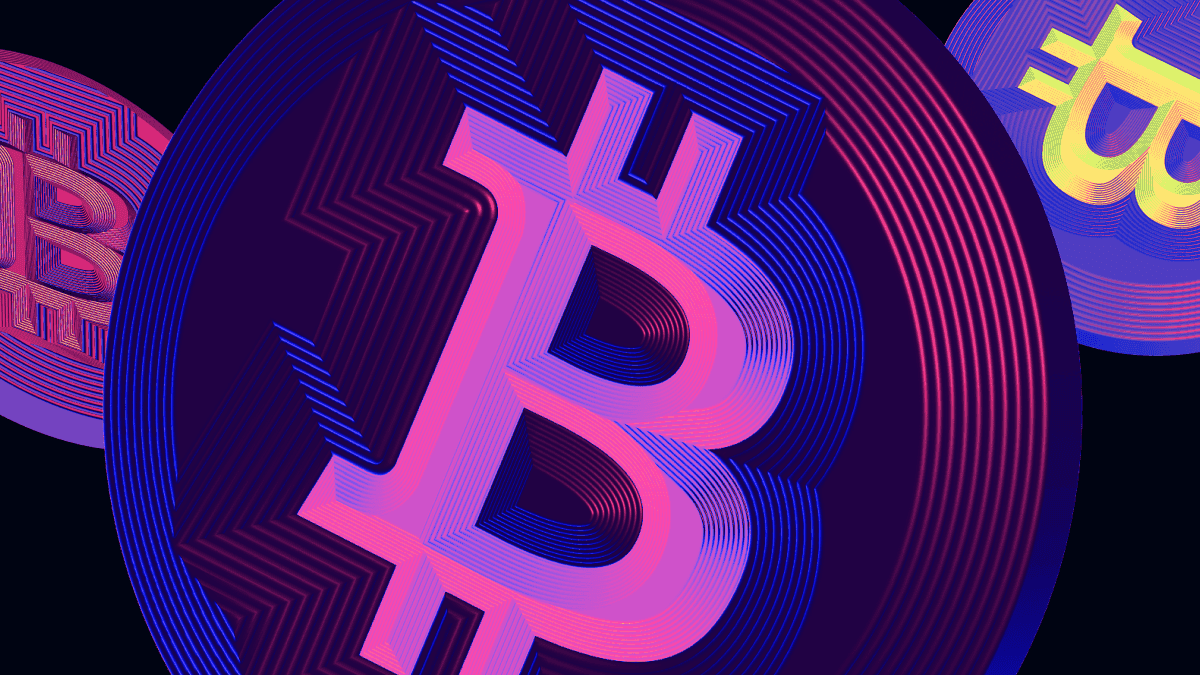What is Ethereum

What Is Ethereum, And How Does It Work
When you hear about cryptocurrencies for the first time, you probably only recognize the two main words from the world of crypto: Bitcoin and Ethereum. No wonder! They are both great in their own ways. When talking about these two, one can refer to blockchains and cryptocurrencies. Although Bitcoin was the first at everything (first blockchain, first crypto, first transaction), there are a lot of cool things about Ethereum. Since its release in 2015, Ethereum has experienced a lot of ups and downs. Yet many traders love it. So what are the benefits of Ethereum, and how does Ethereum work? What is Ethereum coin? Let’s discover more Ethereum info in our new article!
What is Ethereum
Ethereum is a blockchain that is a home for Ether (ETH), a token that allows people to make transactions, profit on staking, work with NFTs, trade cryptos, play games, and many other options. Ethereum was launched in 2015 and is now considered to be the second-largest cryptocurrency after Bitcoin (based on market capitalization).
There are a lot of opportunities on the Ethereum blockchain: from financial tools to different databases. But what else makes the ETH blockchain so special?
- Users can send and receive funds without intermediaries.
- Ethereum cryptocurrency is considered to be a good investment vehicle.
- It allows people to build and run a lot of applications.
- Apps on Ethereum are built with smart contracts. They get executed automatically when the terms are met. Without the need to involve a third party.
- Just like Bitcoin, Ethereum is not owned or operated by one person. Anyone who has access to the Internet connection can run a node or work on the network.
- Ethereum cryptocurrency allows people to send or receive money worldwide without a bank in the middle or any third-party interference.
What is Ethereum Blockchain
First, let’s find out what is Ethereum blockchain. A blockchain is a database shared by many computers in a network. Every new set of transactions is called a “block”. That’s why it’s called a blockchain. They are mostly public. Users can only add data, but not remove it.
The Ethereum blockchain does document and secure transactions, yet it’s more flexible than Bitcoin. Developers usually use ETH blockchain to build everything from logistics software to various DeFi applications. Ethereum is a decentralized system called the Ethereum Virtual Machine (EVM). Any interactions on the blockchain must be verified for everyone to update their copy of the system.
Each block gets validated by miners, just like on many other blockchains. Ethereum has been using the proof-of-work (PoW) consensus method up to 2022. PoW means that miners give their computer power to identify a 64-digit code. The computer power of each miner is proof of their work, and they get rewarded for their efforts in ETH. However, in September 2022, Ethereum switched from a proof-of-work (PoW) to a proof-of-stake (PoS) model, marking the appearance of Ethereum 2.0. This step has improved the scalability and security of the network. Ethereum 2.0 has also included a few other improvements. PoS algorithm costs less and consumes less energy than PoW. Instead of their computing power, miners need to offer collateral to get a chance to validate a block. To activate this ability, a user needs to stake at least 32 ETH. They are then selected randomly. Now it’s easier to understand what is Ethereum blockchain.
What is Ethereum coin
Many people still make the mistake of calling the asset of Ethereum blockchain an “Ethereum coin”. That’s incorrect. The only right name for this asset is Ether or ETH for short. Ethereum is the name of the blockchain. So what is ETH, or what is Ethereum coin?
Ether (or ETH/Ethereum cryptocurrency) is a token that works as a facilitator on the Ethereum blockchain. It can be referred to as “gas” or “fuel” of the network. ETH is the second-largest crypto in the world in terms of market cap (after Bitcoin, of course). The current total supply of ETH is 120.5 million (at the time of writing this article).
Generally, ETH has two main purposes on the network. First, ETH is used for paying fees for transactions, and secondly, it is given as collateral for the chance of becoming a network validator. This is a payment method suitable for both the blockchain and the technologies developed on it.
What is gas in Ethereum
The fees included in successful transactions or smart contract execution on the Ethereum blockchain are called gas. It is used for paying the validators for the use of resources that were needed for transaction conduction.
We already know what is gas in Ethereum. Now let’s understand how it works. Each transaction on the network performed by the EVM has a specific gas cost, which must be proportional to the resources needed for the operation. When someone initiates a transaction, they need to state a gas limit (the max amount of gas that can be used for the transaction) as well as price (the sum of cryptocurrency Ethereum that can be paid for the transaction for the unit of gas). If the gas price is good, a transaction has a higher chance of being included in the block, and it will be executed quicker. The gas is paid at the beginning, and the unused part is refunded at the end. If there is not enough gas for the operation, it gets reversed, but only the unused gas is returned. Gas prices are counted in gigawei or gwei (10−9 ETH). This mechanism is designed to avoid infinite loops when executing contracts. Here is what are Ethereum gas fees.
History of Ethereum
2014
After being described in the 2013 white paper by Vitalik Buterin, Ethereum was presented at the North American Bitcoin Conference in Miami (2014). Buterin, along with 3 other co-founders, rented a house to discuss the prospects of Ethereum. Later, the development of Ethereum was crowdfunded by this team.
2015
In July 2015, the initial public version of the blockchain was launched. The genesis block was created on the 30th of July. It contained 8,893 transactions. The block reward was about 5 ETH (Ethereum cryptocurrency).
2016
About $50M from a smart-contract-powered venture fund was stolen by hackers who found a software bug. After a long debate, the community decided to revise the protocol to restore the stolen funds. It leads to a hard fork. Ethereum divides into two separate blockchains: Ethereum and Ethereum Classic.
2017
This year marks the creation of the ERC-20 standard. It allows people to build compatible apps and create assets on the Ethereum blockchain.
CryptoKitties was the first popular Ethereum-based game. At the moment of its peak, rare digital cats got sold for up to $200,000.
The first DeFi, MakerDAO launches on the Ethereum blockchain. The first Ethereum-based stablecoin DAI also sees the world for the first time.
Cryptocurrency Ethereum (ETH) reaches the $100 USD mark for the first time.
2018
By January 2018, ETH became the second-largest digital currency by market cap (after Bitcoin, of course).
ETH price reaches the $1,000 USD mark for the first time before going back to less than $100.
2020
The Ethereum 2.0 upgrade starts off in December. The transition is expected to take about two years. The Muir Glacier upgrade took place on the 2nd of January 2020.
2021
Cryptocurrency Ethereum (ETH) hit its ATH of $1,700 in February.
In March, Visa announced that it started to settle stablecoin transactions with Ethereum.
There were two network upgrades in 2021: Berlin in April and London in August.
2022
The Ethereum 2.0 took place in September 2022. The blockchain now uses the PoS algorithm.
How does Ethereum work
Users work with Ethereum via nodes by connecting to the Ethereum network and getting the software. Some of them have to download the full copy of the blockchain (it depends on the type of software they have chosen).
Interactions with Ethereum are also possible by generating a private key and creating a wallet address. Wallets are storage devices that can be both physical and online which are used for cryptocurrency storage. Each of them has a unique identifier, better known as a wallet address.
Most holders store their crypto on wallets, and these apps work as storage with private keys. There’s no need to leave the blockchain. On the contrary, the blockchain gives each holder a private key that gives them access to the balance and allows them to use it. The balance is updated after every use. So the wallets store the private keys, not the funds themselves. That’s why it’s so important to make sure your keys are safe. If someone gets their hands on a private key, they can steal all the assets associated with it.
What is Ethereum 2.0
Ethereum 2.0 is a set of the Ethereum network upgrades that change the blockchain consensus mechanism from Proof-of-Work (PoW) to Proof-of-Stake (PoS). It makes the scalability and security of the Ethereum network better.
Ethereum 2.0 is not a one-day event. It has been a long and complicated process that started in 2020. Improving these areas can help Ethereum to reach a higher level of adoption. Moreover, PoS is much faster than PoW. Also, PoS consumes less power, which is why it is considered more eco-friendly. The scalability is expected to increase, while energy usage should go lower.
What is Ethereum staking
Ethereum staking is available for any user. They can hold their cryptocurrency, Ethereum (ETH), in a staking pool and earn the rewards that are equal to your stake’s size. The bigger the size, the more chances to become a block validator there are. When the block is validated, other validators check the block's accuracy. After a threshold number of such checks is done, the blockchain gets updated. Every participating validator receives a reward in ETH proportional to their stake.
Ethereum vs. Bitcoin
BTC is normally used as a digital currency and store of value. Ether is the same. But Ethereum also enables users to create and run apps, smart contracts, and transactions. There are no such options on the Bitcoin blockchain.
Ethereum is also a bit quicker when it comes to transactions: new blocks on Bitcoin are validated every 10 minutes, while on Ethereum, it is done within 12 seconds. Plus, it is expected that further developments will be able to speed up this process even more.
And, of course, it is well-known that the total number of Bitcoins ever released will be 21 million (with 19M already in circulation). When it comes to Ethereum, there is no limit to the assets. There are, of course, benefits of Ethereum and the benefits of Bitcoin. One needs to do research before choosing.
How to buy and sell Ethereum
There are a lot of different ways to buy ETH at the moment. To get the assets, you can use a centralized exchange (CEX) or decentralized exchange (DEX). They both have pros and cons. However, you need to learn more about them and decide for yourself.
Centralized exchanges (CEX) have their own order books and are controlled by a third party that controls every transaction. The users of the centralized exchanges are obliged to pass the KYC verification (by providing their personal info and documents). Their funds are kept on the exchange and can be taken away by the platform.
Decentralized exchanges (DEX) work using the peer-to-peer principle, which means there are no intermediaries between users. Such exchanges do not ask for your personal information or documents. Decentralized platforms do not store users' assets, so you will need a wallet for it (and you will be responsible for it). DEXs are often made using the Ethereum network.
Nowadays, there are many decentralized exchanges available for users who are searching for more freedom and anonymity. For example, WhiteSwap. This is a unique exchange that operates without a central authority and solves 5 major problems of crypto trading: centralization, order books, security, high risk, and accessibility. Smart contracts make sure that every transaction and deal on the exchange is complete. As with all the DEXs, WhiteSwap doesn’t require an account or KYC verification in order to complete operations. The platform works with Ethereum, Tron, and Polygon. There will be more blockchains added soon. The experienced team of the WhiteSwap exchange constantly works on improving the platform. Plus, users can become co-owners of the exchange by owning the governance token (WSD). Here’s how it’s done:
- a user provides liquidity into one of the selected pools and receives an LP token;
- the user then stakes the LP tokens into the staking pool and receives WSD.
The governance tokens allow users to decide on the future of the decentralized exchange: they vote, discuss and offer improvements or changes. They can also receive a part of the fees paid by others (this part depends on the size of the share).
Of course, it’s up to you to decide which type of exchange to choose. DEXs are certainly getting more and more popular every day. Those people who are looking for freedom combined with security, accessibility, and speed, prefer decentralized exchanges. They have come a long way since the beginning of the crypto era.
What is the future of Ethereum
Ethereum 2.0 was one of the major steps for the Ethereum blockchain. It has improved and changed a lot of things. The next big change is sharding. What is this, and how is it important?
Sharding is meant to scale Ethereum. It will spread the database around the network. The technology is similar to cloud storage, with numerous computers accepting the workload in order to reduce computational time. Small database sections are known as shards. They give users a chance to validate transactions simultaneously, which decreases the time needed for the consensus (thanks to sharding consensus). Sharding can already be implemented in 2023.
What else? Web3 is also in the cards for Ethereum. It is a concept so far, but most theories predict that it will be powered by Ethereum since a lot of apps are using it.
Gaming and virtual reality are other options where Ethereum can be used. As well as NFTs. They are tokenized valuables, often created on Ethereum. To put it simply, NFTs are tokens of artworks, music, property, important events (like the first Tweet in the world), and many other things.
As you can see, there are a lot of options for what’s coming next for Ethereum. All because this is one of the most popular cryptocurrencies in the world. It has offered something new and fresh, which was very needed after the appearance of Bitcoin. This digital asset is definitely worth the attention. Even if you are a beginner, you need to learn more about the advantages and disadvantages of this revolutionary crypto. You might become one of the Ethereum fans! So what do you think about this digital asset?

